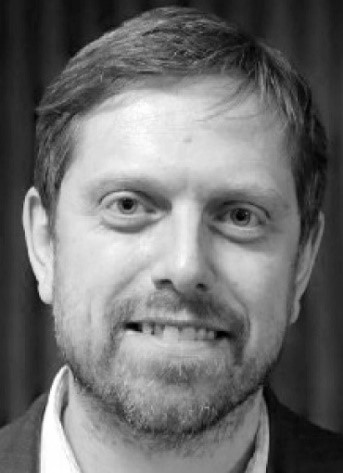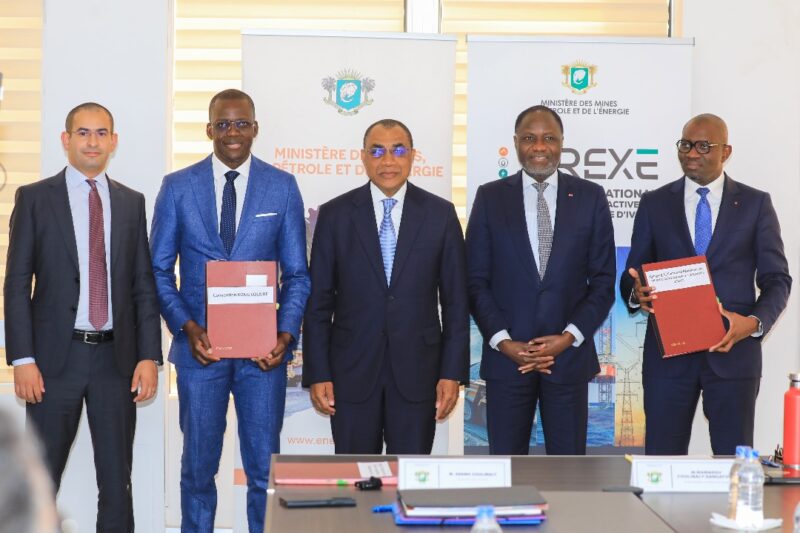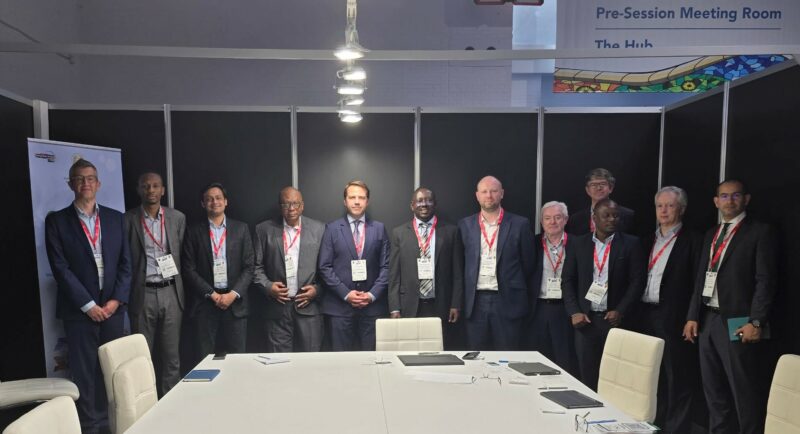5 years on from the launch of Green Mini-Grids Africa – what’s been achieved, and what have we learned?
9th Jun 2020 | Leave a comment | By Steven Hunt
This piece was originally published on the Mini-grids Partnership website
With many thanks to colleagues across the DFID network and partners for their inputs and checking of the detail on the programmes below, and none of the blame for any misinterpretations or mistakes I have introduced.
In March this year the Green Mini-Grids (GMGs) Africa Regional Facility programme officially closed, marking 5 years of DFID support to the development of the sector in Africa. That support is continuing seamlessly, into a second phase, now as part of the wider Africa Clean Energy (ACE) programme. But the transition point remains significant, including for me personally as someone who has been involved since the outset.
If the launch of the programme in 2014 was part of the process of “forming” the mini-grids sector, then I think it’s fair to say the last 5 years has also seen its share of “storming” as a range of approaches have been tried to bringing together the key elements of industrial capabilities, government policy and private finance. With larger country programmes now in place, with increasingly supportive policies drawing on better-evidenced playbooks, and cross-sectoral second generation initiatives like the Universal Energy Facility in development – I think we are now in the necessary “norming” phase, before the “performing” needed to meet the 2030 SDG7 target.
The original GMGs Africa business case had the following stated objectives:
This programme aims to help transform the Green Mini-Grids sector in Africa from a nascent and sporadic series of pilot projects, to a thriving industry on track to contribute the IEA’s estimated 40% of universal electricity access by 2030. This will be achieved by creating a critical mass of experience and evidence of GMGs success in two countries, coupled with improved policy and market conditions for investment in mini-grids regionally.
In the 5 years since the programme started so many things have changed, new partnerships have emerged, new governments have seen the potential of mini-grids, new funding partners have come in to the market, and much more. That makes it difficult really to even assess the programme as originally conceived against how things have gone, but I will have a go, taking each of the key outcomes we hoped could be achieved in turn.
I would advise getting yourself a cup of tea (or whatever beverage you prefer) – this is a long read!
And please – comments, corrections, and different perspectives very welcome. Go ahead and comment below, I will answer if I can, or try to find the answer from other colleagues if not.
Additional public and private investment into the GMGs sector, including 2:1 Private Sector Leverage achieved on DFID investments and new investment programmes in at least 2 additional African countries?
- The Mini-Grids Funders Group, co-chaired by DFID, the World Bank and the African Development Bank, was established in 2017. It now consists of 30 funders and financiers co-ordinating efforts and sharing lessons, who have reported a total committed investment of around $1.8bn into mini-grids globally, of which $1.4bn is in Africa.
- Mini-grids investment programmes led by governments and various financiers (beyond the original GMGs Kenya and Tanzania) are now at various stages of operation in at least 12 more countries, including Nigeria, Sierra Leone, Togo, DRC, Mozambique, Rwanda, Cameroon, Niger, Burkina Faso, Somalia, Ghana, and Guinea, with more in development in countries like Ethiopia and in the Sahel.
However you work out the attribution, and there have been many contributors to this, I think it’s fair to say that the numbers above illustrate a landscape which has totally changed in terms of the scale of financing, the number and range of financiers, and the number of countries with active investment programmes.
Our partnership in this work with the World Bank and African Development Bank has been important in this. Five years ago, the World Bank had a relatively small amount of programming on GMGs, and the AfDB was just kicking off its work in GMGs, through a SEFA grant awarded to JUMEME in Tanzania. Now, both have substantial and growing portfolios with experienced specialist teams in place supporting their wider policy dialogues and lending operations with partner governments, as well as direct support to the market, and data and knowledge products.
The World Bank ESMAP Global Mini-Grids Facility is working with 42 World Bank Task Team leaders globally (28 in Africa), which have so far had 11 GMGs projects approved totalling over $350m of World Bank funds committed of which an estimated $125m (28%) has been spent to date. The 2019 ESMAP Mini-Grids for Half a Billion People report summarising the learnings from studies and learning-by-doing over the 5 years was published in June 2019 at the GMGs Action Learning Event in Accra. It gathered first of its kind sector data and recommendations on the requirements for scaling up mini-grid development and has been downloaded over 17,000 times so far.
The AfDB’s Green Mini-Grids Helpdesk has now supported 107 mini-grid developers in 36 African countries[1], with 46 MW of planned and implemented capacity, over 50,000 planned and implemented connections, an estimated cumulative investment of over $104 million, and received 98% positive survey feedback from developers. One Nigerian company interviewed said it would have taken 10 years to get to where they are now if they had not received Helpdesk support. Market Intelligence reports have been prepared and released for 15 African countries, with an aim to support new market entrants. These reports have also been used in the design of the Burkina Faso electrification programme, the Nigerian Energy Access Fund, and the AfDB’s ‘Desert to Power’ mini-grid strategy.
With DFID support, the AfDB has also strengthened the mini-grid financing ecosystem with two important additions. It brought to market the Facility for Energy Inclusion, a commercial debt platform for small-scale renewables with a strong focus on mini-grids with a target of $400m, of which $265m has been raised so far. It converted the Sustainable Energy Fund for Africa into a larger concessional finance facility with mini-grids as one of three strategic priorities and the ability to do results-based financing. Both initiatives are highly complementary to the on-going market development programme.
Working in partnership as part of the GMGs Africa initiative has also promoted co-ordination between the World Bank and AfDB in this area. Nigeria has been a particular focus of collaboration with AfDB announcing $200m of support in March, co-ordinated with the World Bank’s $350m of which $150m is for mini-grids support – both via the Rural Electrification Agency (whose twitter feed I strongly recommend!).
Challenges remain, particularly relatively slow disbursement rates and long cycle times in procurement of activities and establishment of investment programmes. In some cases these are caused by a range of opinions remaining between governments, industry and the Banks on key issues like support programme structures, tariffs etc – but common principles and playbooks are emerging backed by improving data and previous experience, which is enabling relatively new countries to the mini-grids space to move in some cases even more quickly than countries which had a head start. Taken as a whole, the scale and breadth of financier and investor engagement in the sector has transformed in the last 5 years, and an important share of the capital needed for sector growth in the coming period is available, and starting to flow – although not yet as quickly as needed to meet those 2030 targets.
A strengthened Green Mini-grids sector in East Africa, including at least 500 jobs, as well as at least 5 lead mini-utilities working at scale?
- The African Mini-Grid Developers Association (AMDA), formed of leading East African developers following an initial meeting at the GMGs Africa Action Learning and Exchange event in Nairobi in 2017, currently consists of 30 developers with 288 operational mini-grids in 15 countries across the continent, serving over 46,000 households.
- In Kenya alone in 2017-18, the Powering Jobs Census estimated that more than 500 formal and informal jobs were in the mini-grids sector, with around the same again working in productive uses powered by mini-grids.
- Leading mini-grids players in East Africa including PowerGen, Sol and Powerhive (announcements linked), all supported under the GMGs Kenya Facility, have in the last year announced substantial investments from funds and corporates.
Again, on the market side, it’s clear that the landscape has totally changed since 2014. The creation of AMDA and the growing footprint of its membership, as well as other relevant national and regional industry associations, highlights the growing scale and maturity of the sector. National champions are also starting to emerge, such as GVE Projects and Rensource in Nigeria which are raising capital, delivering sites, creating jobs and signing deals bridging the grid and off-grid, mini-grid and commercial & industrial, sectors.
While regional investment, co-ordination and knowledge platforms provide critical market infrastructure and assets, in the end the rubber hits the road, or gets stuck in the ditch, in national markets. I have found it sometimes inspiring, sometimes frustrating, but always fascinating, to watch progress across a range of African mini-grids markets over the last 5 years.
While the initial thesis was that East Africa, which had seen the early expansion of the off-grid solar market, would also be the first big mini-grid market, the spread of progress is much more balanced across the continent. The following sections attempt a whirlwind summary of progress over the last 5 years in some of the key countries where DFID has provided direct support.
Kenya
Kenya, having been at the forefront of the household solar market and with a dynamic private sector, was assessed in the original scoping study as having strong potential to achieve critical mass in mini-grids. The Kenya Green Mini Grid Facility, delivered in partnership with the Agence Francaise de Developpment (AFD), has been supporting a first cohort of three developers delivering an expected 13,000 connections in 4 Kenyan counties. In the past year, Powerhive has delivered 2,000 connections in existing and 4 new sites with a large number in progress, while also actively promoting productive use including testing new approaches to electric vehicles on mini-grids. RVE.Sol has delivered a further 10 sites and 1,850 connections. PowerGen has successfully delivered mini-grids in 13 sites with 2,300 connections, although switch on is still pending final agreements with Unilever. This last hurdle is just one of many that these three pioneers have faced, and overcome, in bringing these sites and connections online, which they are better placed to describe. But as noted above, all three are delivering connections, have secured substantial investments, have agreed tariffs with the regulator which are viable and higher than the grid tariff, and are growing their portfolios in Kenya and abroad.
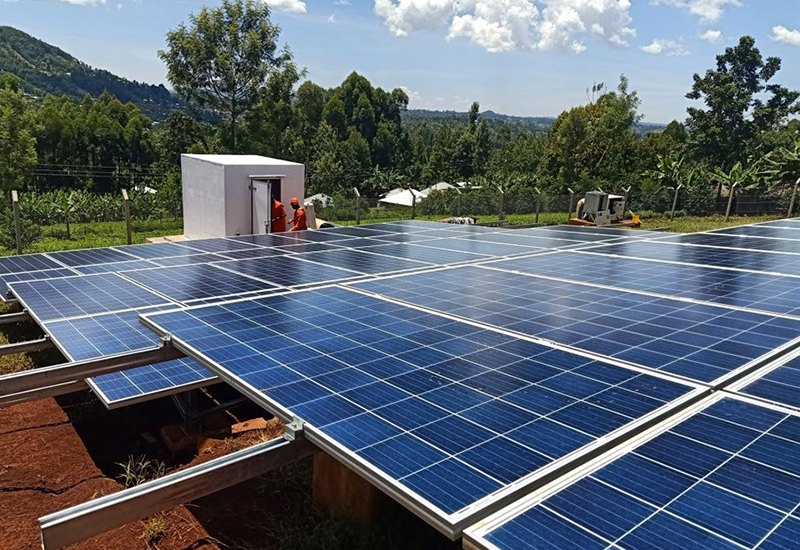
60 kWp Powerhive Mini-grid, in Gionseri village, Kisii county, Kenya (Credit: GMG Kenya Facility)
The Kenya GMG Facility itself has also continued to develop, launching a second call in late 2018 with additional EU Infrastructure Trust Fund support. This has resulted in two new agreements with RVE for 4,600 connections and Renewvia for 1,200 connections, and one more under negotiation with 3,800 connections.
The GMGs landscape in Kenya has also been substantially augmented by the announcement at the 2017 GMGs Action Learning Event in Nairobi of the Government of Kenya and World Bank’s Kenya Off-Grid Solar Access Programme (KOSAP). KOSAP is focussed on hard to reach, dispersed and low-income communities in the dry areas in the north and east of the country. The KOSAP mini-grid component targets 151 sites in 14 counties, with the work divided into 6 lots. The Ministry is expected to issue the request for proposals by mid-2020.
The other main element of DFID support to the mini-grids sector in Kenya has been the Results-Based Financing support provided via the Energising Development Programme which concluded in March 2020. This intervention also focussed in the north of Kenya, and concluded with the delivery of 10 mini-grids and 1,845 connections. Lessons from the Kenya programme, as well as EnDev’s experience in Rwanda with mini-grids RBFs were shared by GIZ at the Accra 2019 Action Leaning and Exchange (ALE) event.
Although progress has been slower than we hoped, around 8,000 Kenyan households now have clean power as a direct result and many more will receive it soon through the scale-up of the GMGs Kenya facility by the EU and via KOSAP, which itself was developed with support from ESMAP under the Regional Facility. Recent census data shows that 50.4% of households use grid electricity for lighting and 19.3% use household solar. According to the Kenya National Electrification Strategy, 1.1 million of the total 10.8m Households are 15 km or more from the national grid and are best served by off-grid systems. This indicates substantial further potential for mini-grids in Kenya – also in the context of powering the COVID-19 response – which can leverage the strengths of its developers and supporting organisations providing technologies, skills and finances.
Tanzania
The mini-grid market in Tanzania always seemed to me the one best positioned for success with its large, unserved and naturally dispersed addressable market, world-leading policy and regulatory environment for mini-grids, and strong set of developers in place because of those factors. However as reported in last year’s update, the DFID contribution to the GMGs Tanzania programme was closed early last March 2019 after a series of delays. However, the programme, which uses a pioneering form of nationwide Results-Based Financing, led by the Rural Electrification Authority and jointly funded with Sida, has continued. Although wider policy and market conditions have remained challenging, Sida estimate that the round 1 projects have now led to around 15,000 new connections and more than 10 MW of new installed capacity of renewable energy.
This remains an important and hard-won contribution to electrification in the country, and development of the GMGs sector more widely. As reported in the Annual Review in 2018, when funding has flowed and the regulatory position been clear, developers have been able to deliver quickly. Building on the results of round 1 and recycling unused budgets from projects which could not reach financial close, a second call was launched by REA in 2019. The exact budget depends on the final first round turnout, but is expected to be of the order of $10m. A qualifying stage was held and 18 quality companies were shortlisted to provide full proposals by 30 April. The requested amount of $36m in Expressions of Interest will exceed the available funding if all meet the requirements.
With DFID no longer directly engaged in the GMGs sector in Tanzania I have reduced visibility of what is happening – but the results being delivered, albeit at a slower pace than hoped, remain significant and the ongoing interest of the private sector in the second round is encouraging. A visit was organised along with the Tanzanian Renewable Energy Association (TAREA) in 2019 for Parliamentarians to operational mini-grids, and this generated very positive feedback from the MPs who were not previously aware of the impacts and potential of mini-grids. It has to be hoped that this kind of exposure to the benefits of mini-grid electrification can help encourage policy support to accelerating the roll-out in future.
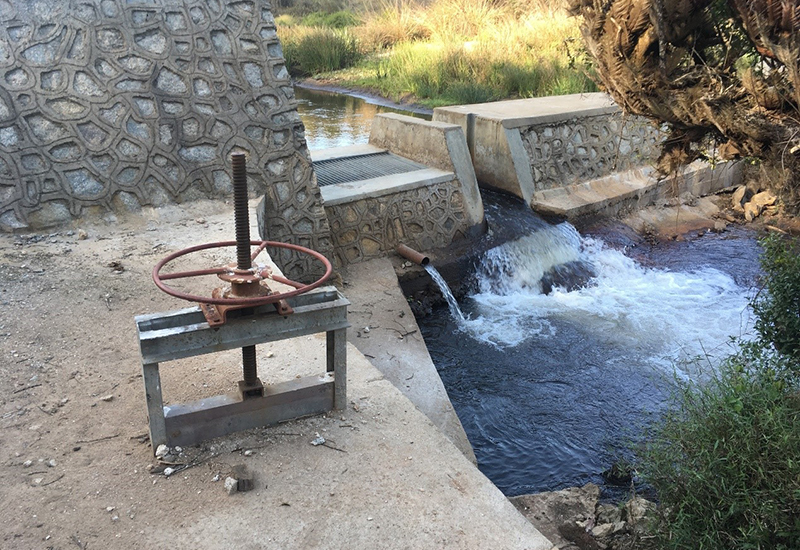
Water intake at Luponde 2.9MW hydro plant, Tanzania
Sierra Leone
In 2014 we never expected Sierra Leone to have a mini-grids programme, but it now has one of the leading programmes in the region. What led to this was the realisation in Freetown amongst stakeholders including DFID, UNOPS, and the Government of Sierra Leone, that the only way to make the post-Ebola commitment to electrify health clinics sustainable, was to go beyond powering the clinics alone and to make these the basis for a community-wide mini-grid. The Rural Renewable Energy Project is currently supporting the construction of 94 solar mini-grids providing around 5MW of renewable electricity in rural communities. In the past year, the three mini-grid operators E-On Off-Grid (now Powergen), Winch Energy and Energicity have recently completed their first round of financing, mobilised in-country, taken over the first 50 sites and made around 7,000 connections to customers. The President of Sierra Leone commissioned these first 50 mini-grids in the past year, although 54 clinics in these villages have already had power since 2017. Powergen has also started construction of the larger phase 2 sites with InfraCo Africa financing.
As the mini-grids delivery has rolled out, the programme has increasingly focussed on supporting productive use of energy on the mini-grids to boost both the viability of the sites, as well as the social and economic impacts for communities. A Call for Proposals closed in March after substantial outreach to communities to encourage the participation of community-based enterprises and other rural businesses. 49 applications were received in the 5 categories of Inclusive Business (Large Companies), Rural Based Businesses, Community Group Enterprises, Youth Groups, and Training/ Business Development Service Providers. 19 applications met the eligibility criteria and these proposals are now undergoing evaluation, with awards expected to be made in the coming quarter. In parallel, Mobile Power has also won support under the Transforming Energy Access (TEA) Powering Opportunities Partnership to pilot battery rental for electric vehicles on Winch Energy Mini-Grids in the country.
Alongside infrastructure development, the programme has been working to develop the policy and regulatory environment for mini-grids. In the last year, the Electricity and Water Regulatory Commission has approved the mini-grid tariff framework, the Environment Protection Agency has agreed new licensing guidelines, and the Parliament recently passed a modern mini-grid regulation, which creates an enabling environment for further investment and mini-grid sector growth. The RREP’s aim is to reach 337,000 people with clean power, boost social and economic impacts in the targeted communities, as well as reduce CO2 emissions. The installation of all 94 mini-grids is expected to be completed by December 2021, including service to 97 Community Health Centres.
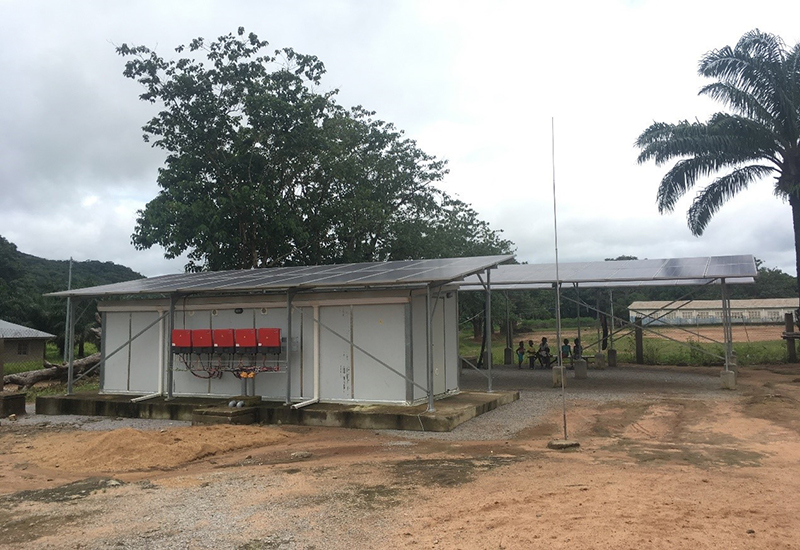
Solar Mini-Grid at Musaia Community Health Centre, Sierra Leone
The results and approach in Sierra Leone have attracted considerable international attention, and several other donors and financiers, including the World Bank, are developing follow-up programmes in the country. A Mano River Union Energy conference in November 2019 shared experiences with neighbouring countries and Sierra Leone’s President Bio highlighted the country’s leadership in the mini-grids sector in his keynote. The approach taken in Sierra Leone, shared at the Accra ALE event, deserves particular consideration in the context of COVID-19, and can provide important lessons for both the response and recovery.
Somaliland
The Energy Security and Resource Efficiency in Somaliland (ESRES) Programme started in 2015 aiming to support the Government of Somaliland to improve access to affordable electricity for vulnerable communities through the promotion of renewable energies. Electricity supply in Somaliland is essentially unregulated and provided solely by a series of diesel-based mini-grids operated by privately-owned Energy Service Providers (ESPs). This meant that, prior to ESRES, electricity prices in Somaliland reached as high as $1/kWh.
In phase 1, ESRES piloted the hybridisation of 6 existing diesel mini grids with solar, to improve reliability and lower the ESP’s operating costs. This allowed them to lower prices by an average of 45% and one of the sites for example was able to extend service from 6-8 hours/day to 24-hour service. ESRES was at the same time supporting the Government of Somaliland to develop the policy and regulatory framework via drafting of the Somaliland Electrical Energy Act and subsequent regulations. Phase 1 was successful in showing renewable energy can cut generation costs, but as the Act is not enforced, the sustainability of the price reductions achieved at the six sites remains a challenge. Also, with an average of 40% technical and commercial losses on typical mini-grids, it’s clear that generation improvements are not all that is needed. Another key learning of phase 1 was that the creation of new connections was limited, because there were also no interventions relating to the physical connection costs, which were carried by the customers.
ESRES phase 2 incorporated the phase 1 lessons-learned in the design of the Somaliland Renewable Energy Fund (SREF), which was launched on 24-25 April 2019 in Hargeisa. SREF’s window 1 supports ESPs to hybridize their mini grids while window 2 is focused on providing renewable energy to social institutions. To ensure price reductions are more sustainable in an unregulated environment, SREF window 1 has built in community mobilisation activities aiming to empower communities to hold the ESPs to account. Phase 2 also invests in distribution network improvements and connections, introducing a Results-Based Financing (RBF) incentive per new connection.
Since the launch of SREF, three large projects have been selected under window 1. These have all started as of March 2020, and by the end of the year are expected to add more than three times the amount of renewable energy capacity of the phase 1 projects combined. Under Window 2, ESRES chose to focus on water utilities and two projects are currently under development. Lastly, ESRES is still working with the six ESPs from phase 1 to review their distribution networks and commercial operations. In 2019, a major data collection and analysis was done of the systems to, for the first time in Somaliland, get an insight in the breakdown of the gross technical and commercial losses. The results will be available soon and provide valuable insights for ESPs on their operations, for the Ministry of Energy and Minerals for planning purposes, and the donor community for further investments in the energy sector in Somaliland.
Mozambique
The BRILHO programme in Mozambique is now fully up and running with the implementing consortium, led by SNV, in place since May 2019. With regards to Mini-Grids, BRILHO is working with the key institutions in the Government of Mozambique, FUNAE and MIREME, on the “Caixa Piloto” framework for mini-grid development, which allows for testing of different options for the ownership and management of assets: 1) private generation – public distribution, 2) private generation – public distribution with management contracts for the distribution, and 3) all private.
BRILHO’s Market Development Fund first call for applications is open now and businesses can apply for £50,000 to £1,500,000 of support in the form of Catalytic Grants (CG) to help offset the direct costs and risks of starting up or scaling their business, and Results Based Financing (RBF) incentivising the businesses to deliver energy services to more challenging markets and further leverage private sector investment. Under this first call, GMG business are eligible for Catalytic Grants only, and therefore for up to a maximum of £750,000 per initiative. GMG initiatives have to focus on one or more of the 61 sites prioritized by the Government of Mozambique and listed in the call for applications. Short-listed GMG business initiatives will initiate negotiations with the Government of Mozambique under the ‘Caixa Piloto’ framework to finalise site selection and agree on the specific terms for their investment, licensing, tariffs, taxes and duties. Overall BRILHO expects to support around 8 GMGs with funding of around £2.2m, in addition to household solar and clean cooking priorities.
Although when originally announced BRILHO was the first programme of its kind in Mozambique, during the period of the tendering process other clean energy access programmes have also been announced in the country. To help maximise collective impacts, BRILHO has worked with key stakeholders to co-ordinate support via new sub-groups of the Energy Sector Working Group of energy donors in Mozambique, which coordinate with MIREME, FUNAE and the Mozambique Renewable Energy Association (AMER) on a regular basis. Hopefully this increasing level of interest, funding and co-ordination on expansion of clean energy access creates the basis for strong results in the coming period.
DRC
In the DRC, the Essor Access to Electricity (A2E) Project has continued supporting the Government of DRC in concessioning three pilot mini-grid projects via competitive auction in the large off-grid urban centres of Gemena, Bumba and Isiro in Northern DRC. The current status of the process is that the final tender package (including the concession agreement, the technical specs and a tariff model) has been shared with the shortlisted bidders. This package was amended following iterative discussions with the bidders and their respective legal counsels and the Government of DRC, as well as with potential lenders and their own counsels. The novelty and complexity of the tender process has meant it has taken longer than hoped to get to this stage, however the final tender package is considered to contain the key elements for success, to be balanced and to have a fair risk allocation amongst the project stakeholders. The bid submission deadline is the end of May 2020.
In support of the Essor A2E process, SEFA has allocated support from the GMGs Africa Regional Facility towards pre-feasibility studies for 13 additional mini-grids also targeting urban centres across the country, which were expected to be launched in Q2 2020, although may be postponed due to the COVID-19 crisis. These are expected to be auctioned based on the same approach developed for the three pilot projects, building on the documentation and learnings from the first round.
The AfDB and Emerging Africa Infrastructure Fund (EAIF) have taken the lead amongst the group of financiers of the A2E projects, conducting their due diligence up front with the support of a Technical Advisory Facility provided by PIDG, financing both the legal review of the project documentation as well as the audit of the tariff model.
Interest from bidders has been confirmed and the Government of the DRC expects to receive quality bids by the end of May from major players in the African power industry.
Innovation and Partnerships
In addition to the GMGs Africa Regional Facility and country programmes, DFID also supports a range of earlier stage R&D and partnerships on mini-grids and associated technologies. This seeks to support and inform the current market, as well as pushing the boundaries and exploring what is next for the sector. The Transforming Energy Access (TEA) programme provides the platform for a lot of our support to mini-grid sector innovation, although there are also links from the Low Energy Inclusive Appliances (LEIA) programme and Frontier Technology Livestreaming.
The Mini-Grid Innovation Lab, with co-funding also from the Rockefeller Foundation and Shell Foundation, is exploring 8 cost reduction and revenue increasing innovations that over time could together reduce capex per connection from an average of $1,000 to $500, and increase average revenue per user (ARPU) from $5 to $17.50 per month. These innovations, being tested by mini-grid developers in the field, include using smart inverters to modularly increase grid capacity, bulk procuring components to reduce installation costs, reducing tariffs to spur consumption, and offering appliance financing for grain mills and other productive use appliances to enable customers to experience the full benefits of electricity. These innovations offer a possible trajectory towards subsidy free delivery for a typical rural African household by 2030, but results-based financing support is still needed to connect people faster, and reach the poorest. The diagram below illustrates how cost reduction and revenue increasing interventions can combine to increase mini-grid viability.
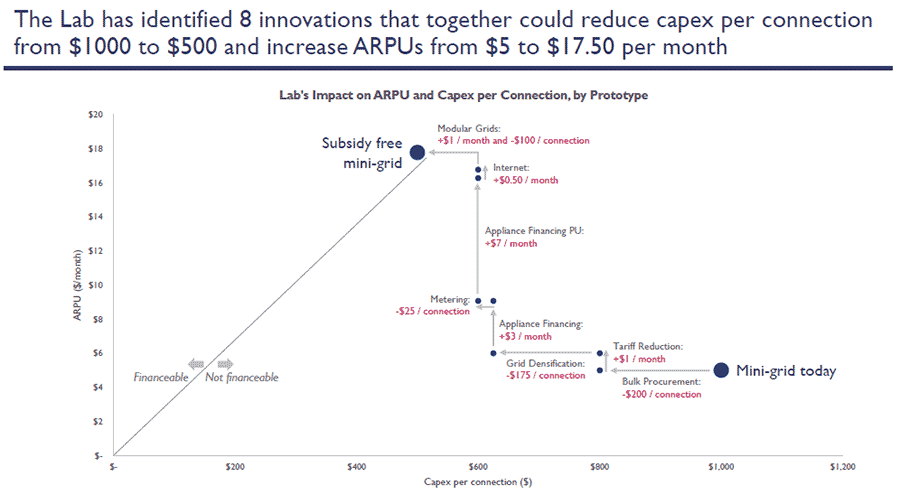
Credit: The Mini-Grid Innovation Lab
Also under the TEA programme, DFID is working with the Shell Foundation to support pioneer firms and sector-enabling innovations. In the past year, in collaboration with AMDA and other sector stakeholders, the partnership has supported the development of the Universal Energy Facility (UEF), a pan-African results-based-financing facility for off-grid energy, to be managed and scaled by SEforALL. Two mini-grids were funded with Nayo Tropical Technologies, a Nigerian sector leader, which will live stream demand and system data through the Odyssey Platform, making valuable data available to the sector. We are also testing various battery technologies and will publish data on the performance of the batteries in mini-grid sites in Nigeria, in collaboration with the Faraday Institution and Oxford University. Support continued for the CrossBoundary Energy Access Fund which has aggregated a significant pipeline of investable mini-grid sites and is now raising a scale up fund of up to $150m. The Energy Company of the Future, now called Konexa, has completed commercial agreements with the Kaduna State distribution company, and has received regulatory approval for the integrated model, a major step forward. Shell Foundation are also still working with Odyssey which now has almost a half a billion dollars managed through their platform from various donor programmes, with $16m already allocated to projects.
Beyond individual programmes and facilities, we are also supporting co-ordination in the sector. This includes supporting organisation amongst the industry as mentioned above, but also the co-ordination between funders and financiers. DFID are co-chairs with the World Bank and AfDB of the Mini-Grids Funders Group. The group has grown from 29 members last year to 30 now, however while last year the total collective financial commitment was around $1bn, it is now estimated at around $1.8bn globally, of which $1.4bn is in Africa. To date only around of 12% of committed budgets have been deployed, and in some countries the need for better co-ordination has been highlighted. I think this really makes the case for why the Funders Group is still so important, to enable active dialogue on how to most efficiently support this still emerging market, working with governments in sometimes complex procurement and negotiation processes, to enable solutions which also enable private investment to come in.
The Mini-Grids Partnership (MGP) is where the three groups of industry, government and financiers can come together to exchange perspectives and solve problems together. 2019 was a busy year for the MGP with 10 Steering Committee calls, 4 newsletters, 2 in-person meetings (Abidjan and Accra) and a growing community of engaged individuals and organisations (4,842 Twitter followers and 1,050 distribution list). The MGP Secretariat at SEforALL also organized two Working Group meetings on training in 2019, enabling exchange on ideas like ESMAP’s concept of an open-source platform for mini-grid training and certification, and the RES4Africa Foundation proposed Microgrid Academy, a vocational capacity building project. A major activity for the MGP in the past year has been fundraising and then commissioning the State of the Global Mini-Grids Market Report. The Report will provide an authoritative, insightful, and up-to-date view of the global mini-grids market, and present the key trends in the industry, funding and policy landscape. The report is being finalised for a launch some time in the middle of 2020, since the original launch plan for the SEforALL Forum in Kigali in May 2020 has been disrupted by COVID-19.
Investment Platforms
In addition to DFID’s grant support, UK Development Capital Platforms have continued to expand their equity and debt investments in the sector in the past year.
InfraCo Africa, part of the Private Infrastructure Development Group (PIDG), has expanded its portfolio from REDAVIA, and Standard Microgrid to include Powergen in Sierra Leone. This investment, which is linked with the RREP programme above, provides $6.9m of financing for a portfolio of 41 solar mini-grids across the southern and eastern half of Sierra Leone.
The Renewable Energy Performance Platform (REPP), funded by the UK Department for Business, Energy and Industrial Strategy (BEIS) International Climate Finance, committed an additional $7.5 million to mini-grid projects across Africa in 2019. Financing was provided in a range of forms including equity, convertible and senior debt, and projects are expected to provide energy access to over 845,000 people who previously did not have it. REPP has continued its strategy to develop financial markets for mini-grids as an asset class at local asset level and completed a market-first off balance sheet mini-grid asset vehicle finance with CrossBoundary Energy Access and PowerGen in 2019. REPP also completed an inaugural REPP Academy for off-grid investees, resulting in detailed 12 month financing plans for all 9 companies attending, and is working with those companies to execute those plans. REPP expects to make further significant commitments to the sector in 2020 and future years, in particular by continuing to help substantial mini-grid companies to develop, and for an asset-level financing market to develop.
135 Green Mini-grids would be installed generating more than 81 GWh/year of electricity from 44MW installed capacity and providing at least 1.1m people, enterprises and community services with access to sustainable energy, while reducing or avoiding at least 1.05mTCO2e?
- A conservative estimate based on figures gathered for this update of the current extent of implementation of mini-grids with UK support in the last 5 years is at least 230 mini-grids, with more than 180MW of renewable capacity, reaching at least 250,000 people
While the numbers of mini-grids, connections and installed capacity are easier to track across the portfolio, and should be increasingly easy with tools like Odyssey and integration of smart-meter data, outcomes like CO2 emissions-avoided and jobs involve more assumptions and I think we need better and more consistent data on those in the future. It is also interesting to see which types of projects move which of the numbers more strongly. For example, the grid-tied hydro mini-grids and grids with substantial commercial and industrial customers dominate the MW-installed figures. By contrast most of the mini-grids installed and people-reached figures tend to come from the smaller and more numerous and distributed solar mini-grids. There are also important enabling or platform impacts where we can’t count the “result” directly, but you can immediately see the value. For example I have not included the 62,000 smart meters sold by SparkMeter across mini-grid sites globally, or the 30,000 connections so far developed and connected with finance on Odyssey (since these have been financed by others), or any of the operating assets of the 31 operational developers supported by the Mini-Grids Helpdesk.
But to me these and more are all as important as the headline figures attributable to DFID. It is through the pioneers we have supported to grow to this point, combined with the $1.8bn committed via the Mini-Grids Funders Group, the new programmes and associated policy changes in 12 more African countries, and the new developers and private financiers entering the market as a result, that scale will ultimately come.
Way forward
The UK-Africa Investment Summit in January had a strong focus on energy and infrastructure, with several African “pace-setters” prioritising mini-grids. The UK is hosting COP26 in Glasgow in 2021 and announced the doubling of International Climate Finance including £1bn for the Ayrton Fund for clean energy innovation at the UN Climate Action Summit last September. Green mini-grids have a clear role to play in the clean energy transition in Africa, and I hope that the foundation created in the last five years by the GMGs Africa initiative is one that can be built on by many in the coming five to deliver accelerated growth on the road to delivering SDG7 by 2030.
Of course the big new challenge thrown into the mix in the last few months has been the COVID-19 crisis. The implications of this are still unfolding and are unprecedented in any of our lifetimes. Active discussions are ongoing about implications on all sectors, and Mini-Grids is no exception. DFID colleagues and partners are actively engaged in these and hope to support positive solutions for both the short and longer terms. Damilola Ogunbiyi, the CEO of SEforALL, has highlighted the importance of energy access in this crisis, and Michael Liebreich of Bloomberg New Energy Finance has outlined some interesting perspectives on some of the ways that the crisis could affect energy markets in the future.
In particular, the crisis has thrown a spotlight on health systems, and elevated the short term need for a long term priority, which is to ensure healthcare facilities have the power they need to store vaccines, operate oxygen concentrators and therapies, pump water for handwashing, communicate and store data, and much more. This challenge is one that I think the Mini-Grids sector can and should rise to, finding new ways of working with the health community including existing the Cold Chain Equipment (CCE) suppliers well-integrated in those chains. The Sierra Leone post-Ebola experience noted above can offer important lessons, as can the earlier Powering Healthcare initiative which DFID supported to test models in this area. New types of partnership will be needed as the health and energy sectors come together to enable access to energy for primary healthcare facilities, as the “social anchor” for wider electrification of the communities these facilities serve. This will be important to ensure the reliability of the ongoing supply of energy to the clinics, as well as a key part of a sustainable post-COVID social and economic recovery.
For further information on the GMGs Africa initiative and any of the specific programmes or partnerships mentioned above, please contact:
GMGs Kenya – Hosborn Wamukonya H-Wamukonya@dfid.gov.uk, Rita Laibuta laibutar.ext@afd.fr
GMGs Tanzania – Jorgen Eriksson jorgen.eriksson@gov.se
GMGs Africa Regional Facility – Anna Stephenson A-Stephenson@dfid.gov.uk, Joao Duarte Cunha J.CUNHA@AFDB.ORG, Jon Exel jexel@worldbank.org
Rural Electrification in Sierra Leone (RESL) – Chris Pearce C-Pearce@dfid.gov.uk, Nick Gardner nickg@unops.org
ESRES Somaliland – Anita Kaushal a-kaushal@dfid.gov.uk, Randall Nottingham randall.nottingham@esres-somaliland.org
Essor DRC – Tom Stevenette t-stevenette@dfid.gov.uk, Chim Chalemera c-chalemera@dfid.gov.uk, Stéphane Woerther swoerther@philae-advisory.com
Brilho Mozambique – Javier Ayala jayala@snv.org
TIME Partnership with Shell Foundation – Steven Hunt s-hunt@dfid.gov.uk, Emma Miller e.miller@shell.com
Transforming Energy Access (TEA) – Steven Hunt s-hunt@dfid.gov.uk, TEA@carbontrust.com
Results-Based Financing Facility with EnDev – Phil Mann, P-Mann@dfid.gov.uk, Barbara Richard (barbara.richard@giz.de) and Simone Fehrenbach (simone.fehrenbach@giz.de)
Renewable Energy Performance Platform (REPP) – Andreas Arvanitakis Andreas.Arvanitakis@beis.gov.uk, Geoff Sinclair geoff.sinclair@camcocleanenergy.com
General Inquiries – Steven Hunt s-hunt@dfid.gov.uk
[1] Benin, Burundi, Botswana, Burkina Faso, Cape Verde, Cameroon, Chad, Cote d’Ivoire, DRC, Ethiopia, Gambia, Ghana, Guinea, Kenya, Lesotho, Liberia, Madagascar, Malawi, Mali, Mauritania, Mauritius, Mozambique, Niger, Nigeria, Rwanda, Sao Tome Principe, Senegal, Seychelles, Sierra Leone, Somalia, South Africa, Tanzania, Togo, Uganda, Zambia, Zimbabwe
Leave a Reply
Related projects
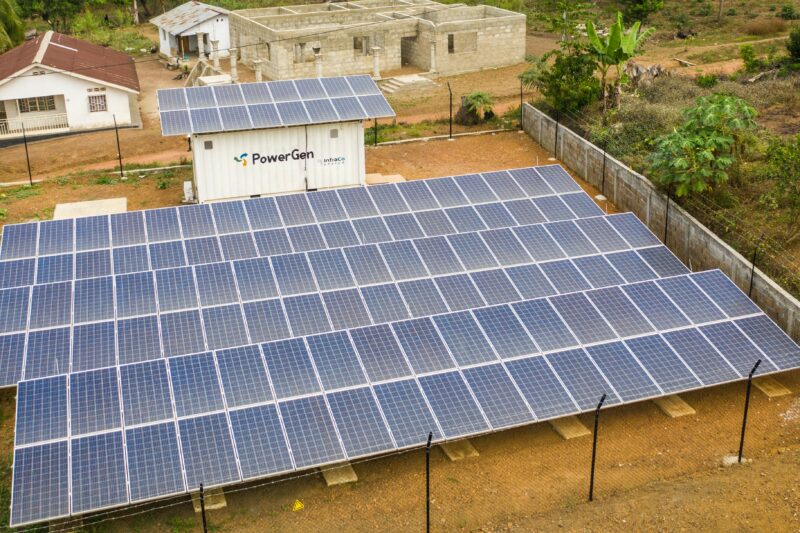
Sierra Leone: Sierra Leone Mini-grid Project I & II
Rolling out off-grid energy access
The project operates a portfolio of solar, battery, diesel hybrid mini-grids serving over 13,000 customers across the southern and eastern half of Sierra Leone. An extension, supported by UEF, will expand access to further communities.


